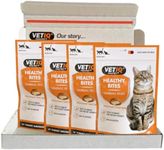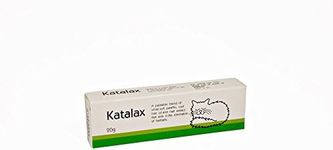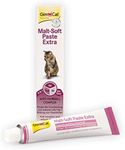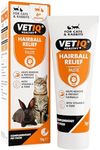Buying Guide for the Best Hairball Treatments For Cats
Choosing the right hairball treatment for your cat is essential to ensure their comfort and health. Hairballs are a common issue for cats, especially those with long fur, as they groom themselves and ingest loose hair. The right treatment can help prevent hairballs from forming or assist in their safe passage through the digestive system. When selecting a hairball treatment, consider your cat's specific needs, preferences, and any underlying health conditions. It's important to understand the different types of treatments available and how they work to make an informed decision that will benefit your feline friend.Type of TreatmentHairball treatments come in various forms, including gels, pastes, treats, and specially formulated cat foods. Gels and pastes are often flavored to appeal to cats and can be applied directly to their paws or mixed with food. Treats are a more palatable option for picky eaters, while special cat foods are designed to reduce shedding and improve digestive health. Consider your cat's preferences and how easy it is to administer the treatment when choosing the type. If your cat is finicky, a treat or flavored gel might be more suitable, whereas a cat with dietary issues might benefit from a specialized food.
IngredientsThe ingredients in hairball treatments are crucial as they determine the effectiveness and safety of the product. Common ingredients include fiber, which helps move hair through the digestive system, and lubricants like mineral oil or petroleum jelly that ease the passage of hairballs. Some treatments also contain vitamins and minerals to support overall health. When selecting a treatment, check for any ingredients your cat might be allergic to and consider their dietary needs. If your cat has a sensitive stomach, opt for a treatment with natural ingredients and avoid artificial additives.
Frequency of UseThe frequency with which you need to administer a hairball treatment can vary based on the product and your cat's needs. Some treatments are designed for daily use, while others are meant to be given weekly. It's important to follow the manufacturer's instructions to avoid overuse, which can lead to digestive issues. Consider your cat's grooming habits and the severity of their hairball problem when determining the frequency. Cats that groom excessively or have long hair may require more frequent treatment, while short-haired cats might need it less often.
Cat's Age and HealthYour cat's age and overall health can influence the type of hairball treatment that is most appropriate. Kittens and senior cats may have different dietary needs and sensitivities compared to adult cats. Additionally, if your cat has any health conditions, such as diabetes or kidney disease, you should consult with a veterinarian before choosing a treatment. Tailor the treatment to your cat's life stage and health status to ensure it is safe and effective. For example, a senior cat might benefit from a treatment that also supports joint health.
Ease of AdministrationThe ease with which you can administer a hairball treatment is an important consideration, especially if your cat is uncooperative. Some cats may readily accept a flavored gel or treat, while others might resist. Consider your cat's temperament and how they typically respond to new foods or medications. If your cat is difficult to handle, a treatment that can be mixed with their regular food might be the best option. The goal is to make the process as stress-free as possible for both you and your cat.
















